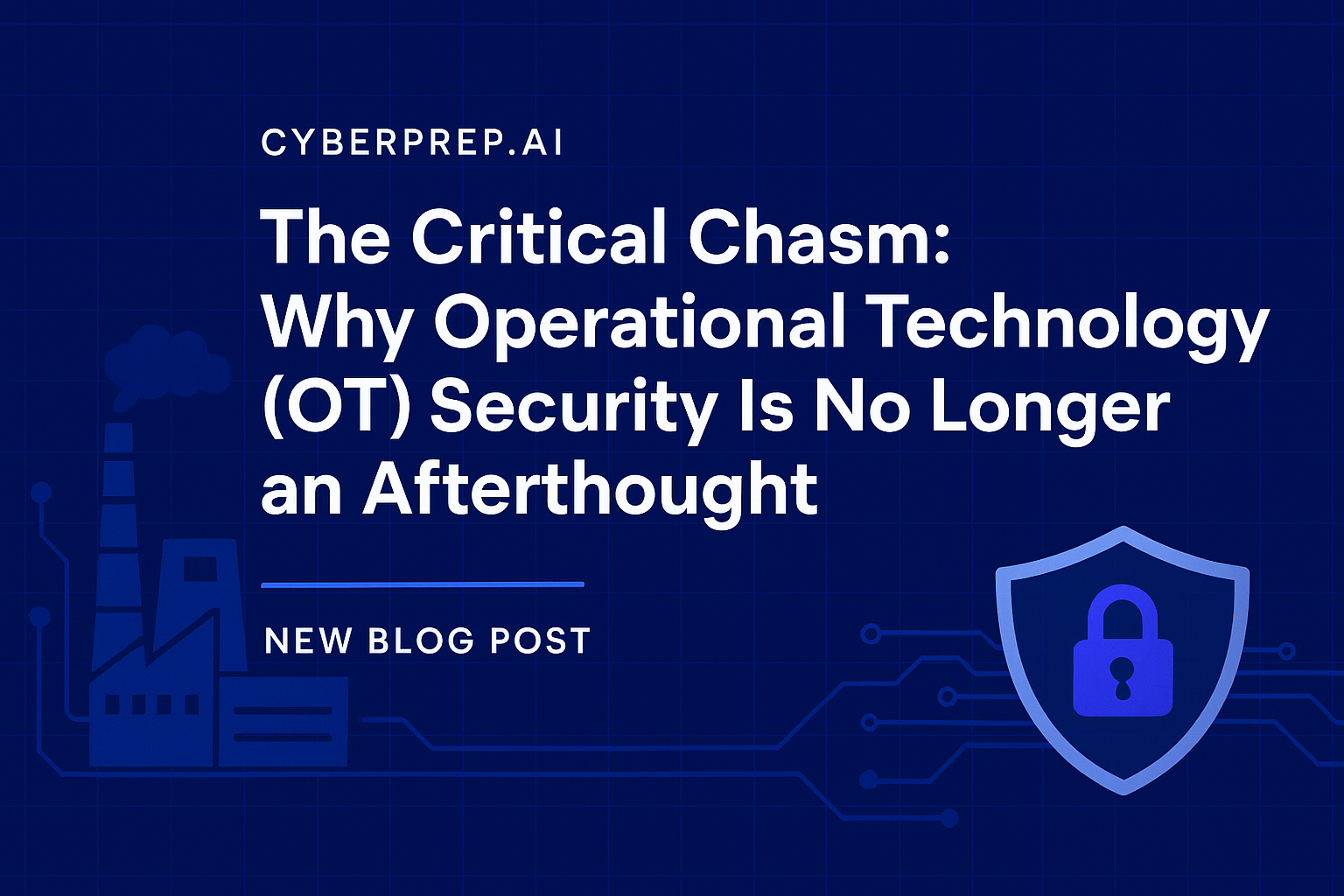Welcome back to the Cyberprep.ai blog. When we talk about cybersecurity, our minds often jump to data breaches, phishing emails, and stolen financial information. We think of laptops, servers, and cloud accounts. But a parallel and increasingly critical threat landscape exists, one that can impact physical infrastructure, production lines, and even national safety: Operational Technology (OT) security.
The convergence of IT (Information Technology) and OT (Operational Technology) is creating a critical chasm in many organizations worldwide. This gap represents a significant vulnerability that, if exploited, can have far more tangible and devastating consequences than a typical IT hack. At Cyberprep.ai, we emphasize a holistic Preparedness Framework that addresses every aspect of your digital and physical operations.
What is OT and Why Is It Different?
Operational Technology refers to hardware and software that monitors and controls physical processes, devices, and infrastructure. Think of it as the technology behind the scenes that makes the physical world work. This includes:
- Industrial Control Systems (ICS): Found in manufacturing plants, power grids, and water treatment facilities.
- Supervisory Control and Data Acquisition (SCADA) systems: Used for large-scale industrial processes like pipelines and power distribution.
- Building Management Systems (BMS): Controlling heating, ventilation, and air conditioning (HVAC), and access control in large buildings.
- Transportation Systems: Traffic lights, rail controls, airport systems.
Unlike IT systems, which prioritize data confidentiality, OT systems prioritize availability and safety. A minor IT glitch might cause inconvenience; an OT cyberattack could cause physical damage, environmental hazards, power outages, or even loss of life. Downtime in OT can be measured in millions per hour, far exceeding typical IT system outages.
The Growing Threat Landscape for OT
Historically, OT networks were “air-gapped” – physically isolated from IT networks and the internet. This is rarely the case today. The drive for efficiency, remote management, and data analytics has connected OT systems to the internet and IT networks, creating new pathways for cyber threats.
Globally, we’re seeing:
- State-Sponsored Attacks: Governments targeting critical infrastructure for espionage or sabotage.
- Ransomware Attacks: Cybercriminals are encrypting OT systems to extort payments, leading to production shutdowns and service disruptions.
- Insider Threats: Malicious or accidental actions by employees impacting physical operations.
- Supply Chain Vulnerabilities: Compromised components or software introduced during the manufacturing or deployment of OT systems.
The impact isn’t just theoretical. Real-world incidents have shown how attacks on OT can disrupt power grids, halt manufacturing, and compromise public utilities.
Bridging the Chasm: Why OT Security Needs a Specialized Approach
Securing OT requires more than just extending IT security tools. It demands a specialized approach that considers:
- Legacy Systems: Many OT systems have long lifecycles, run outdated operating systems, and cannot be easily patched or updated without disrupting operations.
- Unique Protocols: OT uses specialized communication protocols that IT security tools may not understand or monitor effectively.
- Physical Safety: Security measures must never compromise the physical safety of operations or personnel.
- Operational Downtime: Patches, reboots, or security scans cannot be done without careful planning to avoid disrupting critical processes.
Building an Integrated Security Posture with Cyberprep.ai
The convergence of IT and OT means your security strategy must also converge. Protecting your organization in 2025 requires a unified approach that understands the nuances of both domains.
This is the very essence of Cyberprep.ai. Our advanced training programs bridge this critical chasm. We empower your IT security professionals to understand OT environments and equip your OT engineers with cybersecurity best practices. We help organizations develop a comprehensive Preparedness Framework that integrates IT and OT security, ensuring continuous availability, integrity, and safety across all operations.
Don’t wait for a physical outage or an operational disaster to highlight your OT security gaps. The future belongs to organizations that secure their entire technological footprint.
Visit cyberprep.ai to learn how to build an integrated and resilient IT/OT security strategy.

